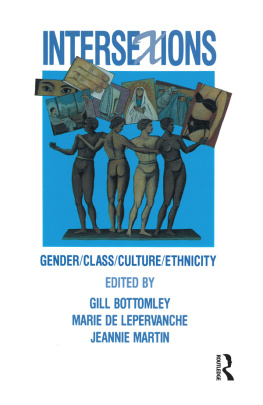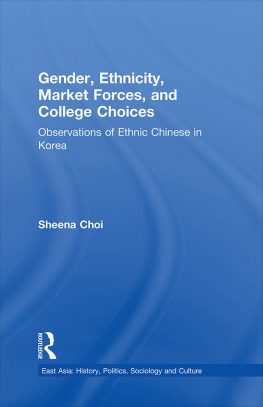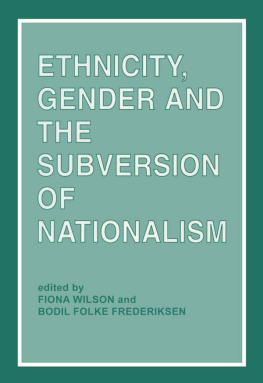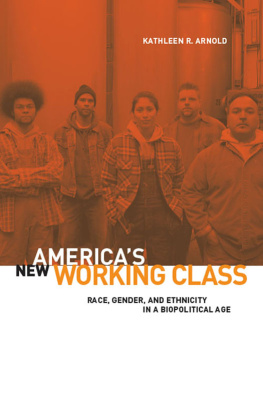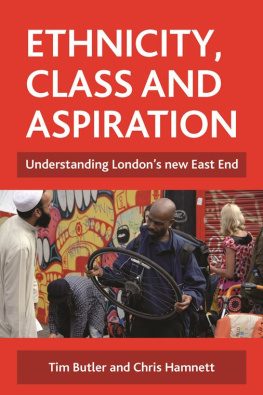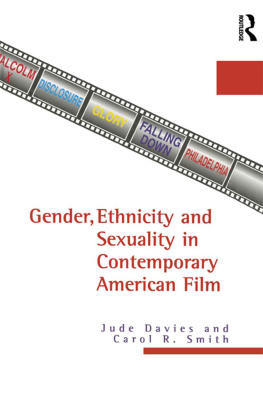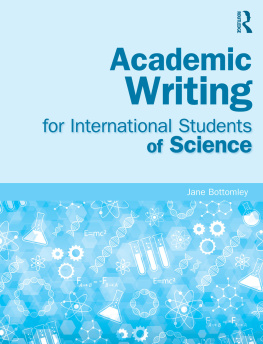Ethnicity, Class and Gender in Australia
First published 1984 by Allen & Unwin
Published 2020 by Routledge
2 Park Square, Milton Park, Abingdon, Oxon OX14 4RN
605 Third Avenue, New York, NY 10017
Routledge is an imprint of the Taylor & Francis Group, an informa business
Gill Bottomley and Marie M. de Lepervanche 1984
All rights reserved. No part of this book may be reprinted or reproduced or utilised in any form or by any electronic, mechanical, or other means, now known or hereafter invented, including photocopying and recording, or in any information storage or retrieval system, without permission in writing from the publishers.
Notice:
Product or corporate names may be trademarks or registered trademarks, and are used only for identification and explanation without intent to infringe.
National Library of Australia
Cataloguing-in-Publication entry:
Ethnicity, class and gender in Australia.
Bibliography.
Includes index.
ISBN 0 86861 704 0.
1. Minority women Australia Social conditions Addresses,
essays, lectures. 3. Social classes Australia Addresses, essays,
lectures.
I. Bottomley, Gillian, 1939-. II. De Lepervanche, Marie M. (Series:
Studies in Society (Sydney, NSW); 24).
305.800994
Library of Congress Catalog Card Number: 84-71001
Set in 10/11 pt Times by Setrite Typesetters, Hong Kong
ISBN-13: 9780868617121 (pbk)
Contents
Jock Collins
Andrew Jakubowicz
Marie de Lepervanche
Michael Morrissey
Mary Kalantzis and Bill Cope
Gill Bottomley
Jeannie Martin
Constance Lever Tracy
Michael Kakakios and John van der Velden
Bill Hampel
Michael Humphrey
Guide
Gill Bottomley Senior lecturer in Anthropology and Comparative Sociology, Macquarie University
Jock Collins Lecturer in Economic and Financial Studies, Kuringai College of Advanced Education
Bill Cope Research fellow, Centre for Multicultural Studies, University of Wollongong
Marie de Lepervanche Senior lecturer in Anthropology, University of Sydney
Bill Hampel Lecturer in Sociology, Melbourne College of Advanced Education
Michael Humphrey Tutor in Anthropology and Comparative Sociology, Macquarie University
Andrew Jakubowicz Senior lecturer in Sociology, University of Wollongong
Michael Kakakios Tutor in General Studies, University of New South Wales
Mary Kalantzis Research fellow, Centre for Multicultural Studies, University of Wollongong
Constance Lever Tracy Post graduate student in Sociology, Flinders University of South Australia
Jeannie Martin Tutor in Sociology, University of New South Wales
Michael Morrissey Research fellow, Centre for Multicultural Studies, University of Wollongong
John van der Velden Post graduate student in Sociology, Australian National University
Over the last quarter of a century, a great deal has been written about Australian immigration and its consequences. Much of this material has been problem-oriented, concerned with the practical difficulties of coping with large numbers of non-English speakers in a society whose basic institutions and attitudes are Anglocentric. Other works have been concerned with policywith the control and limitation of numbers, the assimilation or integration of migrants and their offspring. Ethnicity has also been of interest, variously defined but usually having to do with observed cultural differences.
Despite the fact that migration studies have become a minor growth industry, the subject still remains outside the mainstream in Australian social sciences (as elsewhere). Migration is a kind of specialty study, not integrated into Australian history and sociology but tacked on as an extra chapter in a book or as an afterthought. The implications of mass migration and the complex fragmentation of Australian society have been remarkably neglected by social analysts. Even the most talented and critical students of Australian class and culture sidestep the issues raised by migration and ethnic diversity, despite their valiant and increasingly successful struggles to include those others who have been hidden from historywomen.
The late Jean Martin commented on the migrant presence in Australia and institutional responses to that presence. In The Migrant Presence (1978) she discussed the construction of knowledge and its relation to dominance. She made the important point that the most fundamentally powerful effect is the ruling out of certain objects as objects of public knowledge (p.23). She went on to demonstrate how selected aspects of the migrant presence had been admitted and defined as public knowledge.
In this book, we are attempting to take that process further. All the authors writing here approach migration and ethnic diversity from a perspective that seeks to throw light on Australian societyon class formation and fragmentation, the construction of gender and social reproduction, and the formulation and maintenance of ideologies of domination based on class, gender and race. We believe that it is not possible to include migrants as an integral part of Australian society within the framework of an orthodox social science, which continues to legitimise existing power relations. Our approach, therefore, is a critique from the left. We want to alter the terms in which discussion about Australian immigration has taken place.
The first chapter, by Jock Collins, establishes a political economy framework for the discussion of immigration and class in Australia. Within this framework, he asks and answers the questions: why immigration; what is its impact on Australian society; and how have the migrants themselves fared. He also investigates the role of the state in the immigration process.
Andrew Jakubowicz and Marie de Lepervanche both explore the construction of conservative ideologies. Jakubowicz traces the discussions of ethnicity and multiculturalism in the US and in Britain, as well as in Australia. In all three countries, conservative governments have been faced with continuing social problems, one of which is an ethnically segmented workforce. Jakubowicz shows how some of the ethnic relations strategies of the Thatcher and Reagan governments have been influential in Australia in efforts towards the same goalthe maintenance of class power and the continuing imposition of more rigid and socially discriminatory practices.
Marie de Lepervanche makes a detailed analysis of the origins and historical development of socio-biological theory. The natural explanation provided by socio-biologists makes the inequalities of race, ethnic origin and gender appear inevitable, while the structural inequalities of class are denied.
Michael Morrissey, on a similar theme, talks about migrantness and especially about the way in which culture is held responsible for disadvantage. His striking examples of this process come from his studies of migrant health, especially occupational health.
Another crucial institution for ideology-building is education. Mary Kalantzis and Bill Cope have developed and taught a successful multi-cultural programme in Sydney schools. Their chapter includes a brief history of multiculturalism and its embodiment in educational policy. They use examples of five Sydney schools to illustrate the consequences of a policy that views multiculturalism as attitudes, feelings and personal development. They argue that a sound multicultural programme would confront racism, prejudice and discrimination and encourage students to develop an understanding of themselves in relation to the broader society.



